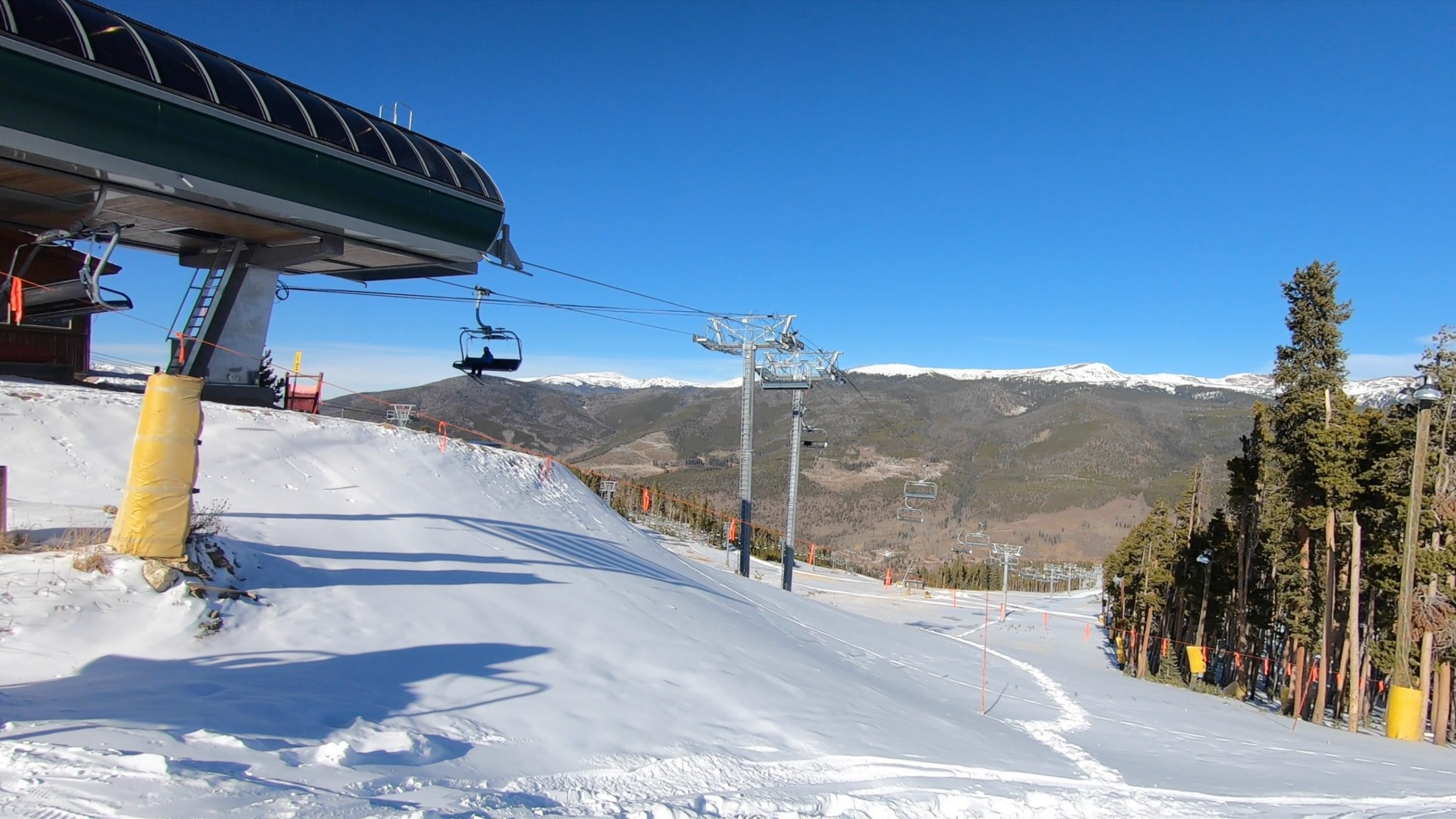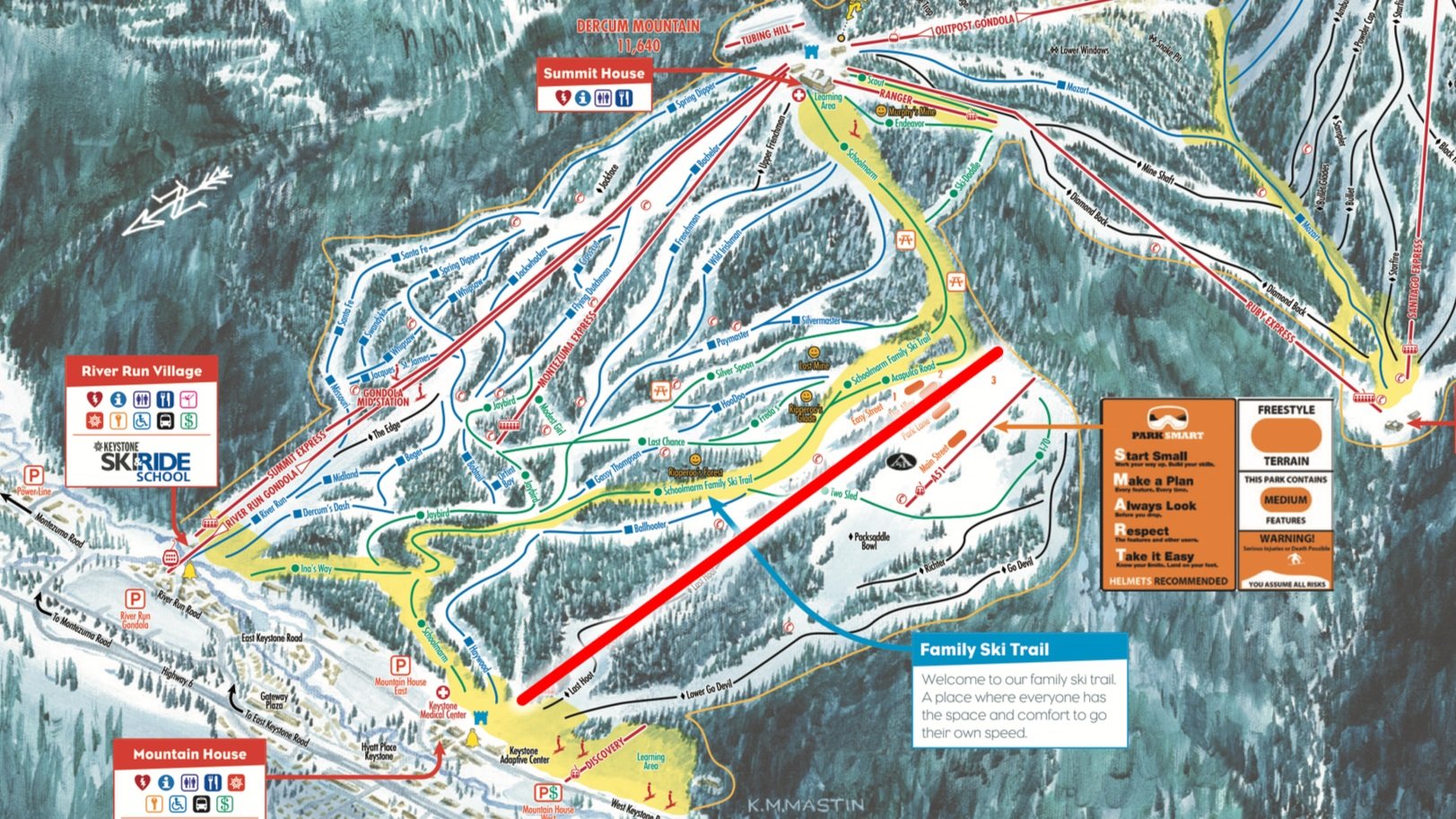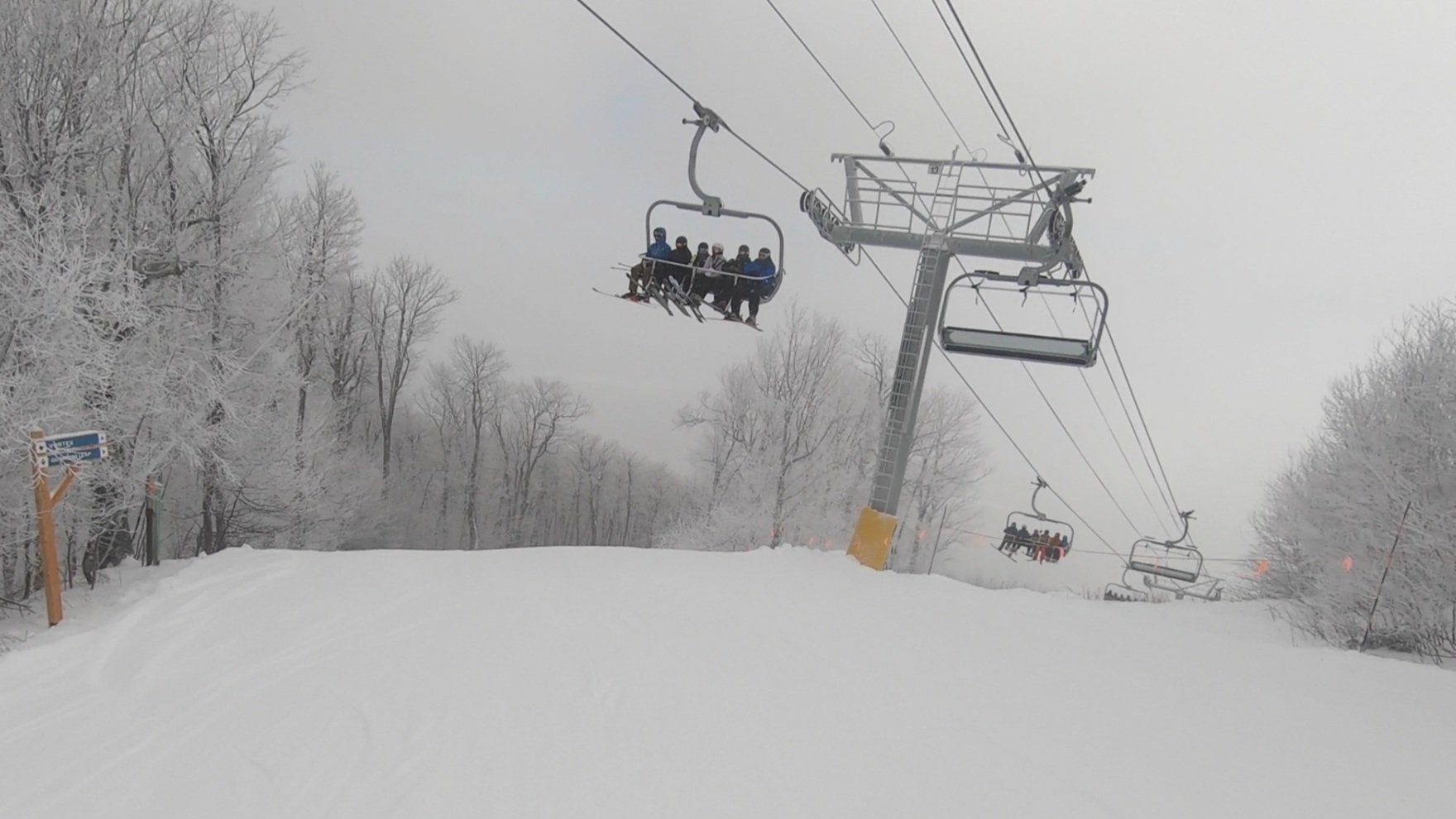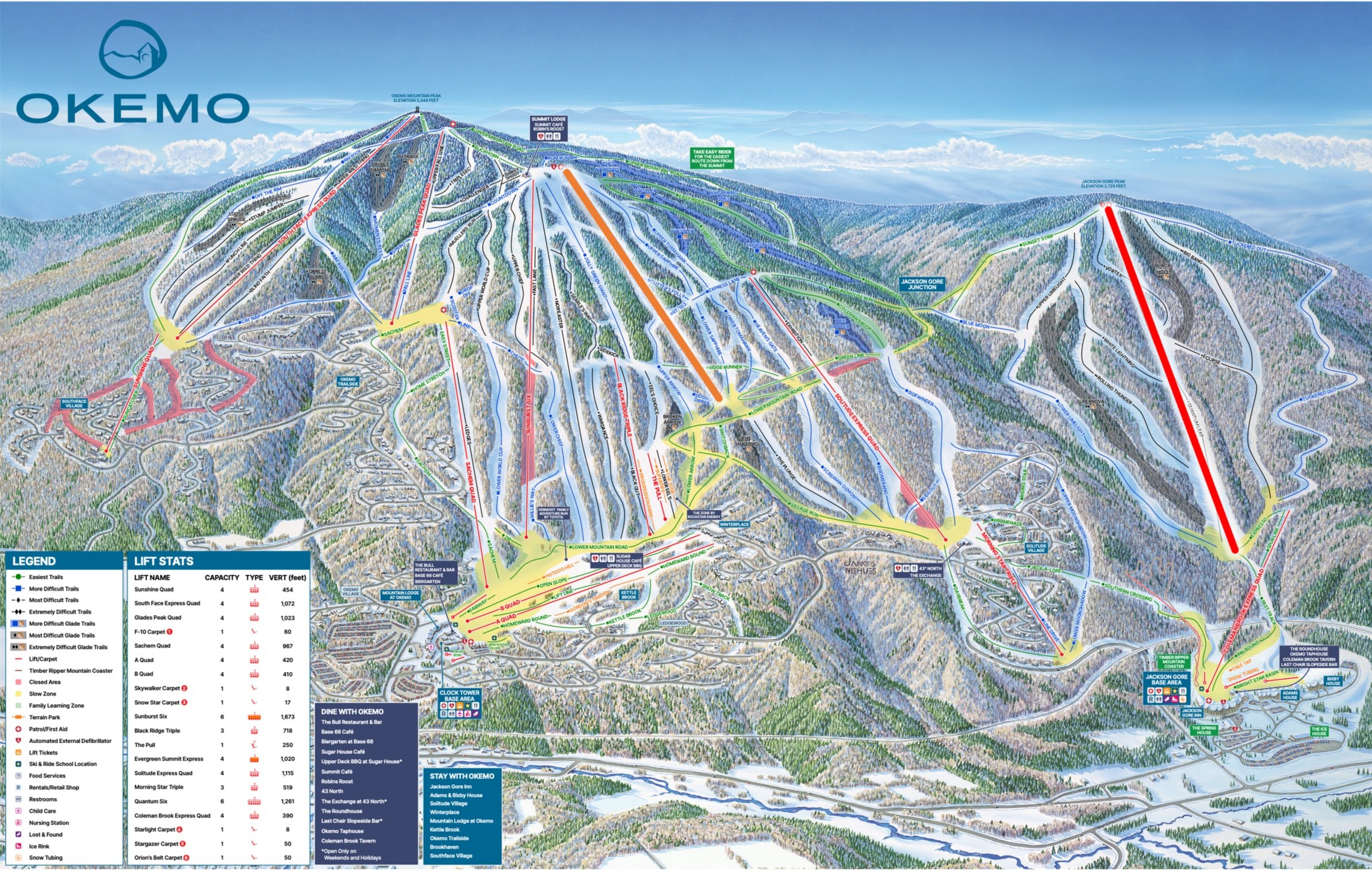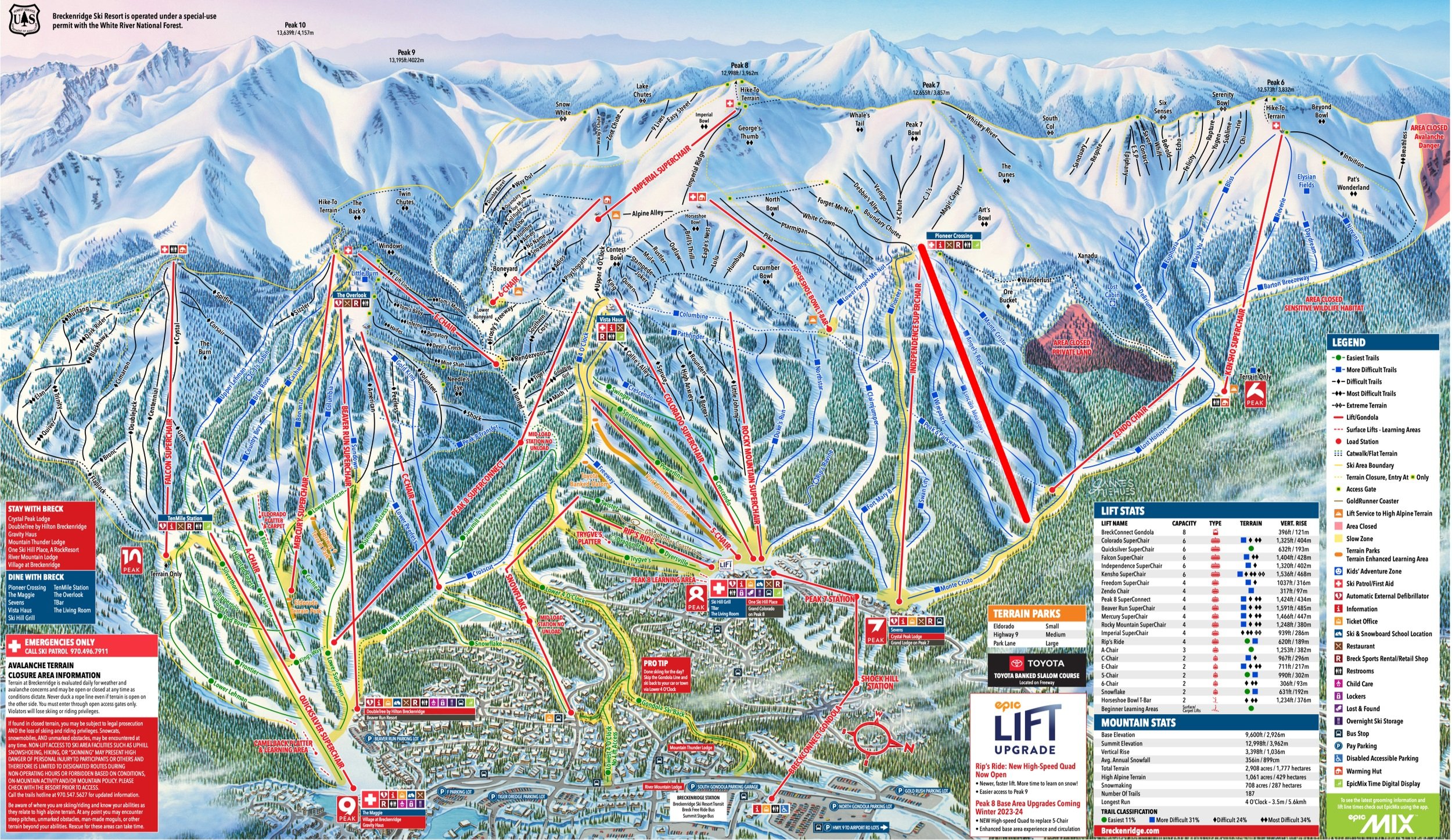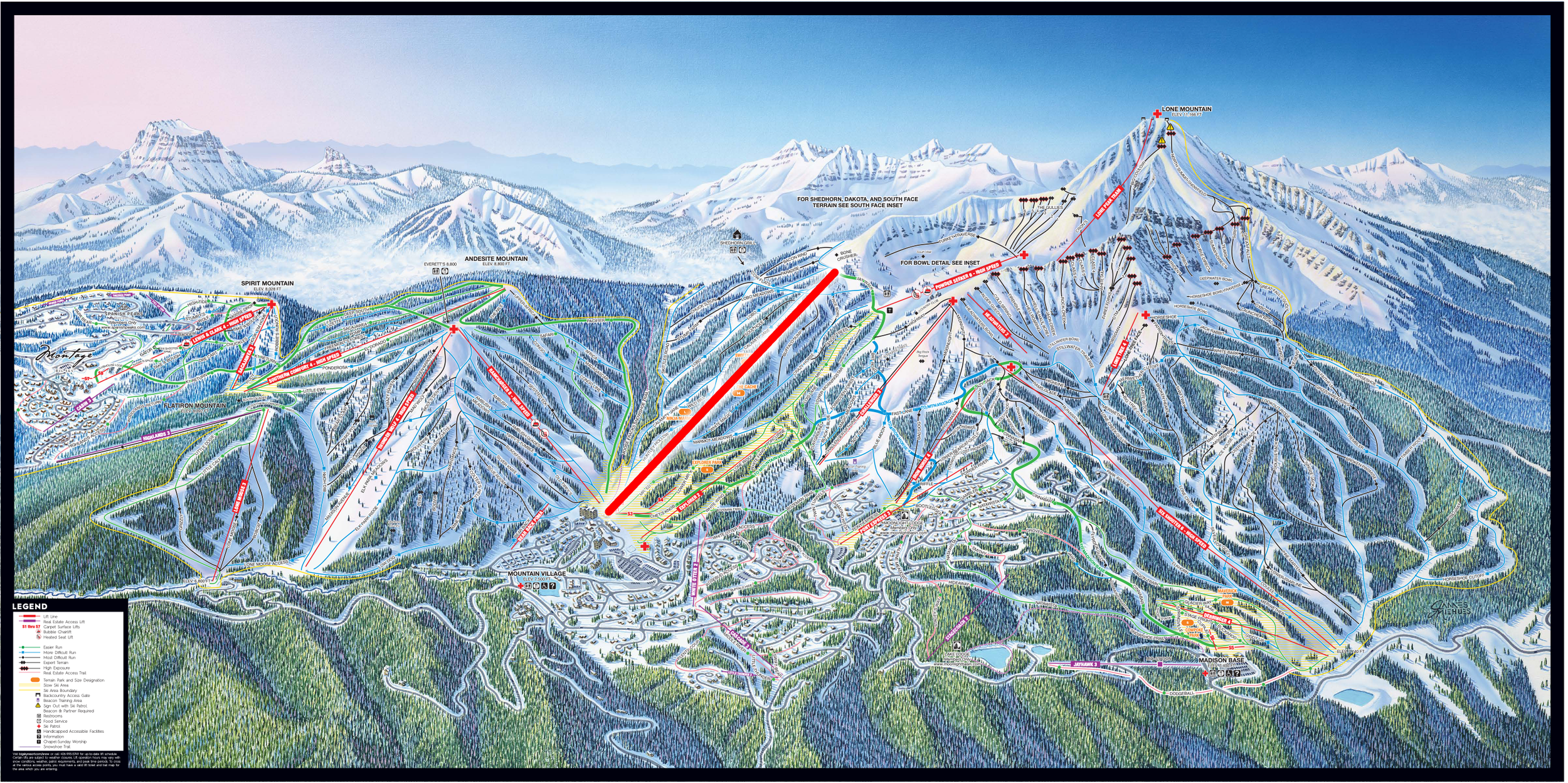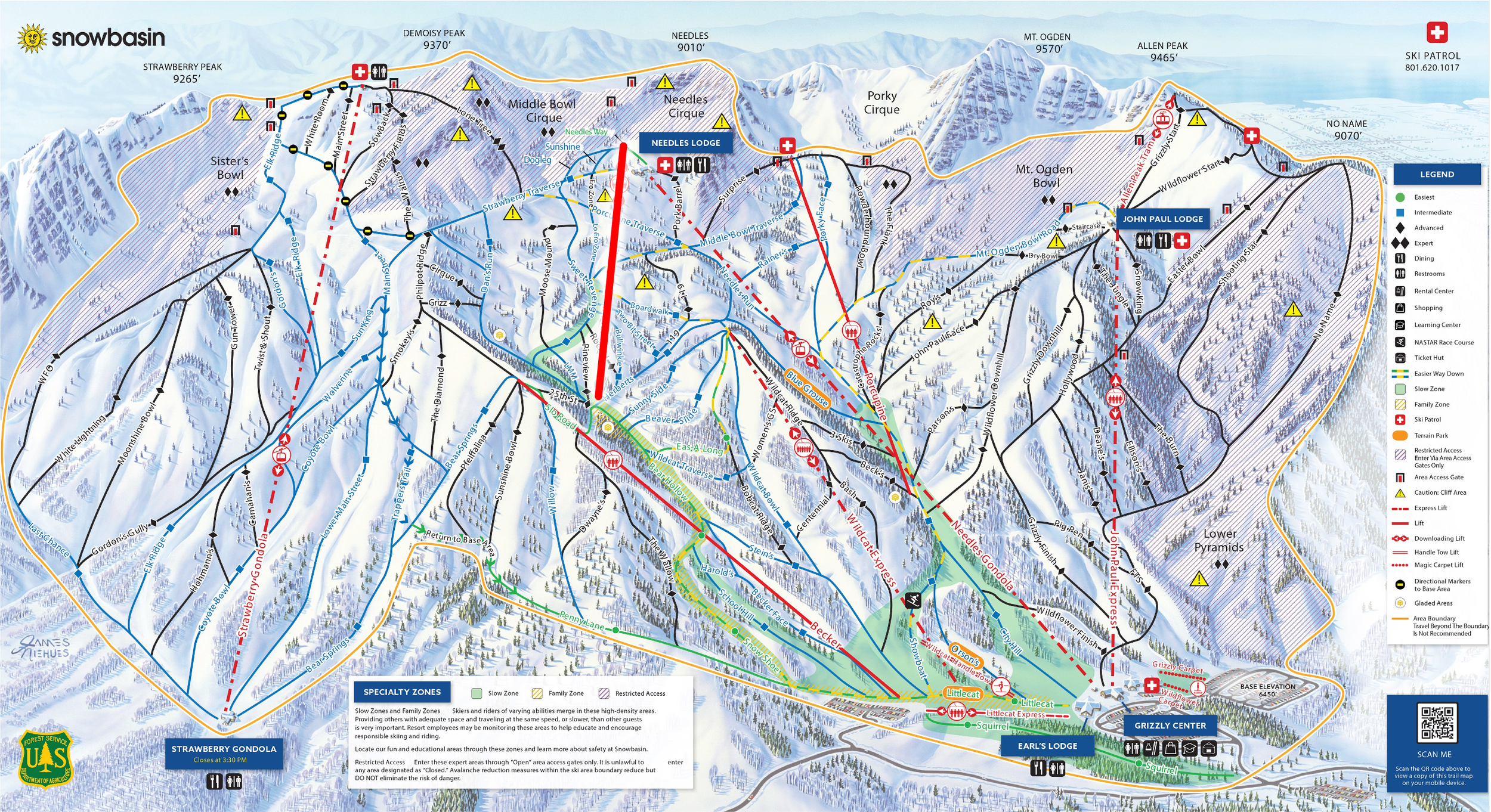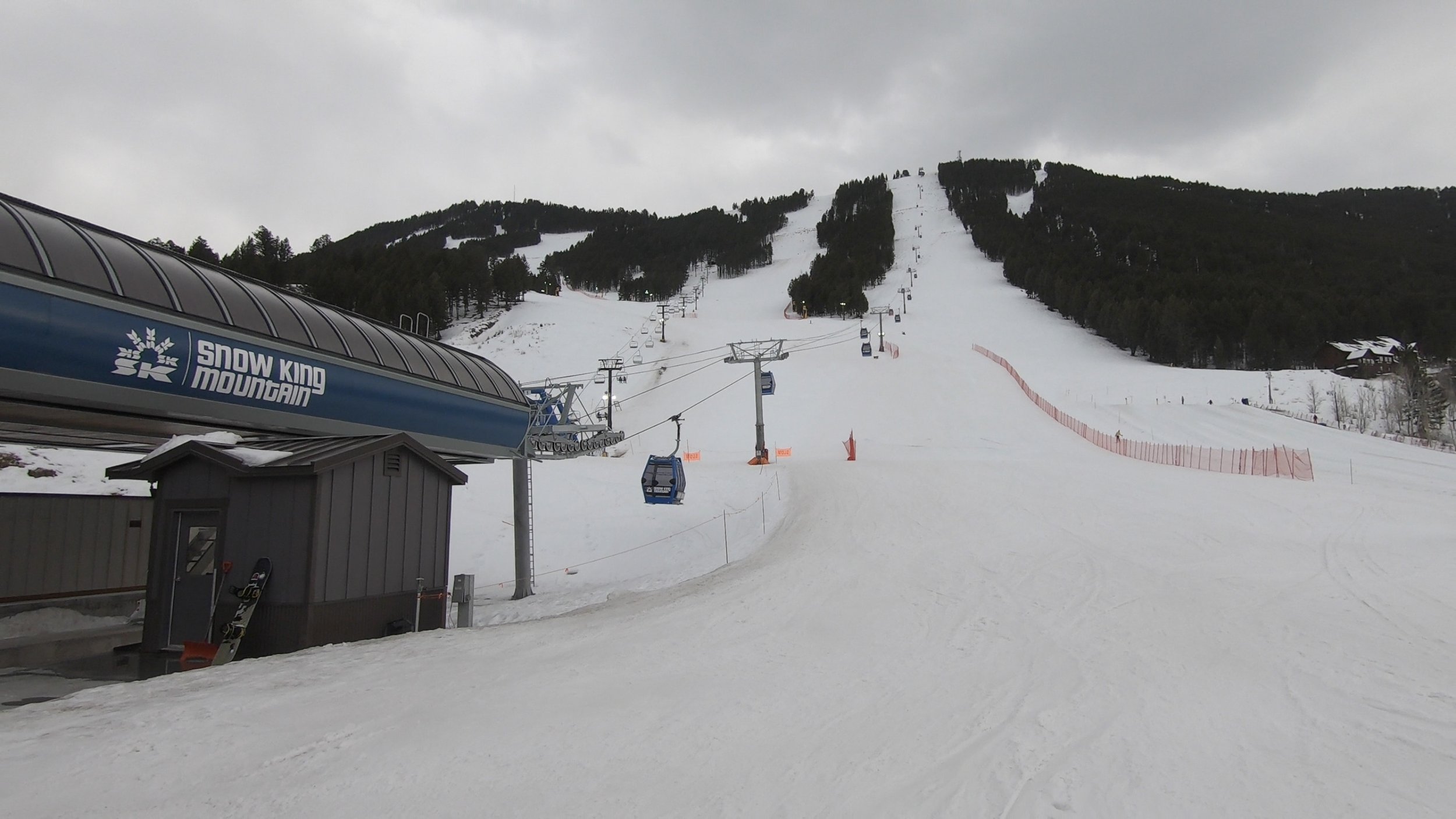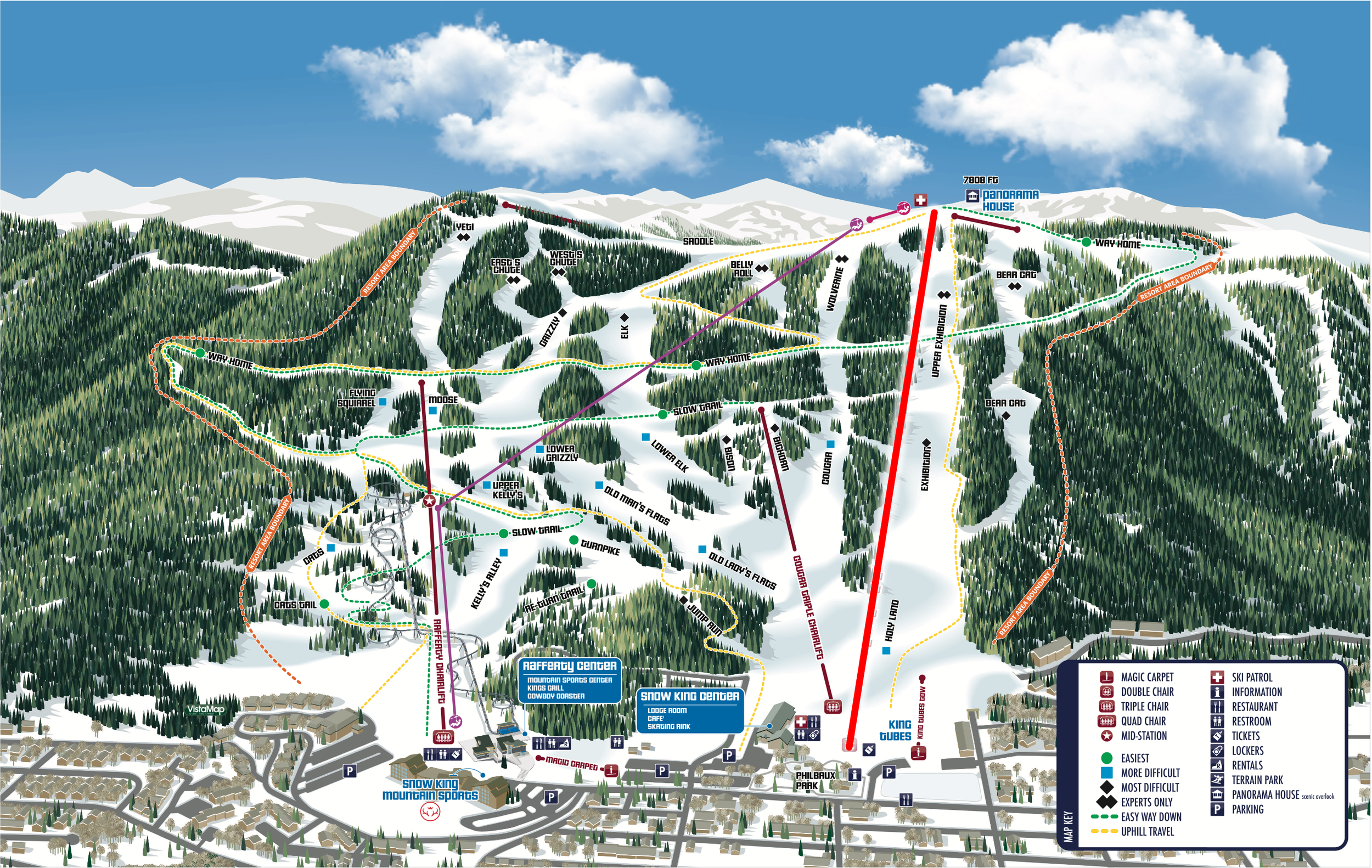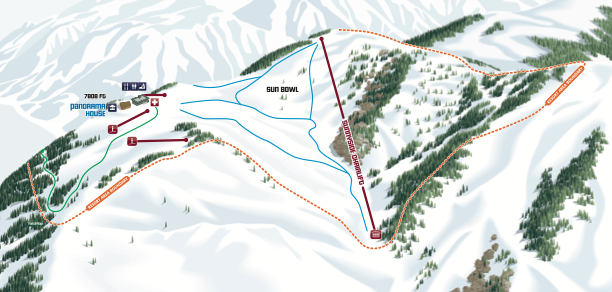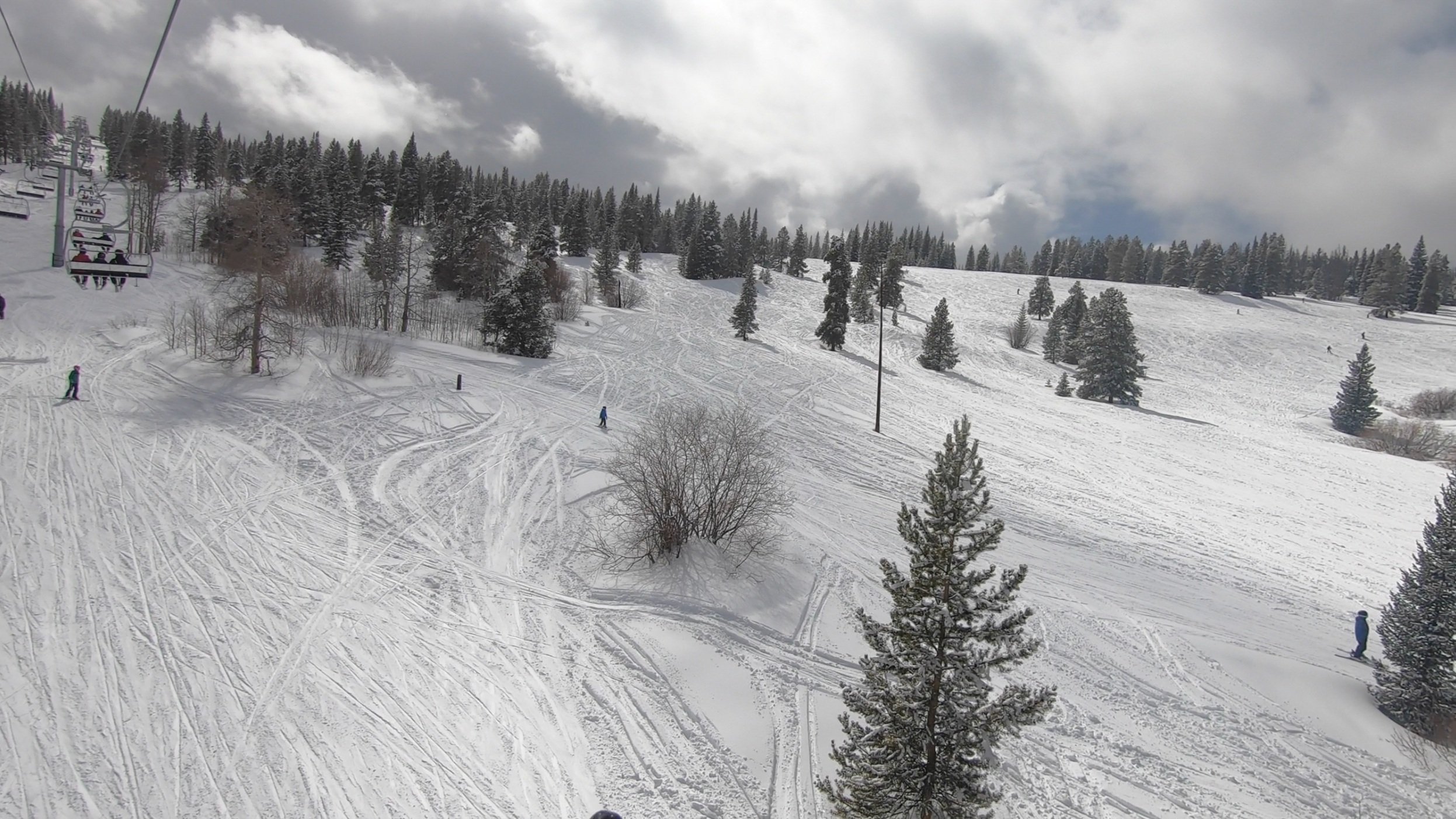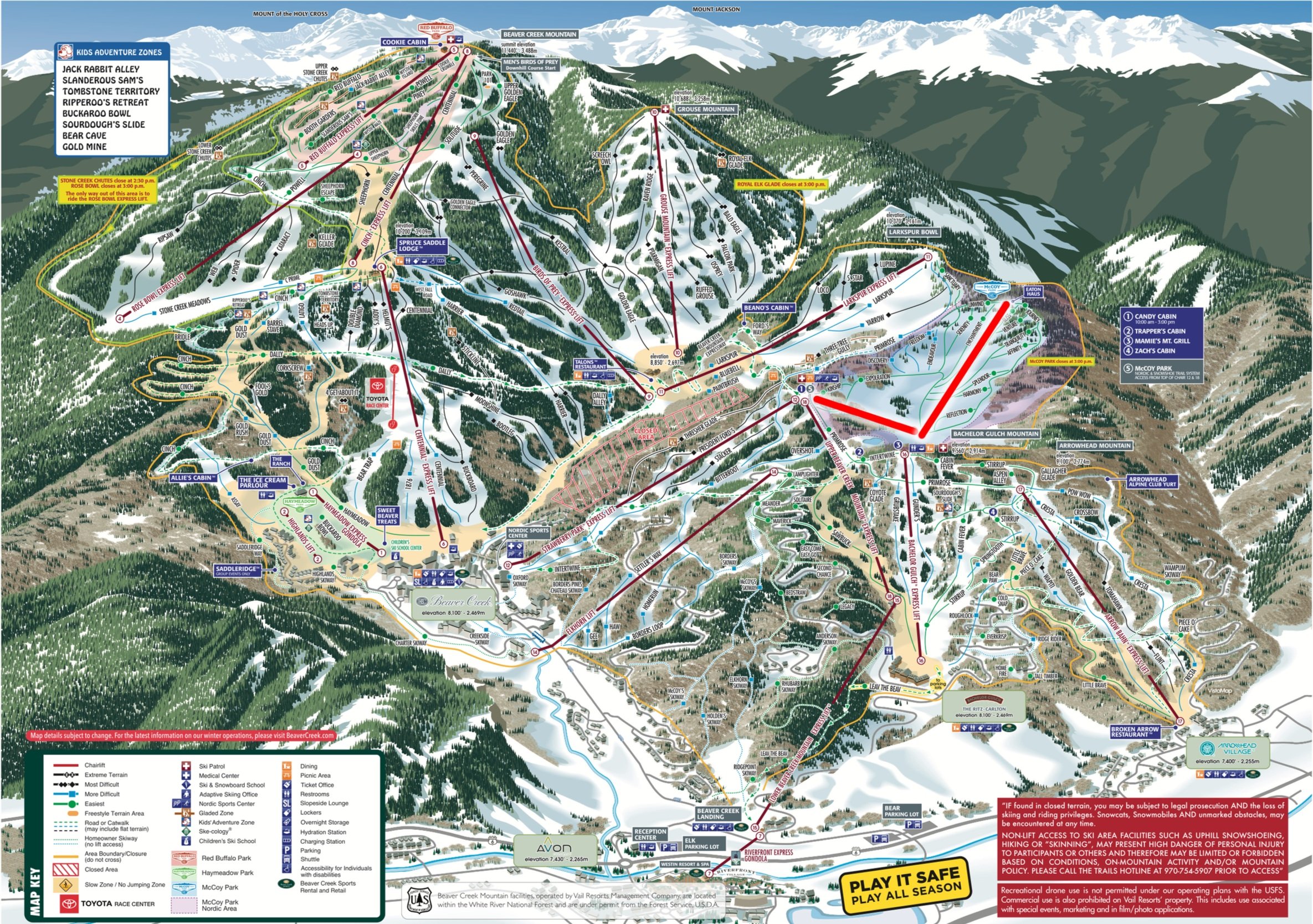2022 Ski Resort Upgrades Ranked: Which Were Hits and Which Flopped?
When it comes to the North American ski scene, the landscape is always changing. That’s because each year, ski resorts take on major investments to try to make themselves more competitive—or to just maintain a reliable operating experience. But following a dearth of activity during the initial COVID period, resorts exploded with investment activity for the 2021-22 season, introducing several upgrades, including lift and terrain enhancements, that came with major potential. But not all of these upgrades were created equal, and some had significantly larger impacts than others. So which improvements were flops and which hit the nail on the head?
In this piece, we’ll rank each of the major North American ski resort investments within the past 12 months, and we’ll highlight the advantages and missed opportunities from each one.
We’ll also caveat that none of the upgrades on this list were inherently bad decisions on their own—it’s just that some had more positive effects than others, while a couple faced outside or unexpected impacts that drowned out their effectiveness. Oh, and sorry Sunday River, if your lift didn’t open last winter, it doesn’t make it on this list.
#8: Keystone Peru Express Six-Pack
Coming in at the bottom of our list is Keystone’s new Peru six-pack, which was by no means a bad upgrade but was more of a reliability play than a true experience change. Keystone replaced their 30-year-old Peru high-speed quad with a state-of-the-art six-pack last season, and the new lift provides base-to-mid-mountain service from the Mountain House base area in the same alignment in the old one. The resort also removed the adjacent Argentine double lift, which was constructed in 1977.
Keystone’s new Peru lift may be more modern than the old one—and the upgrade was likely needed to mitigate future upkeep concerns—but we haven’t noticed a significant impact on the overall mountain experience. While the lift brings six-pack lift service to Keystone’s satellite Mountain House base for the first time, the chairs are more widely spaced than those of the old lift, and the capacity upgrade over the outgoing quad is really quite negligible.
An inset of Keystone’s trail map; the new Peru Express six-pack is highlighted in red.
Additionally, the Argentine lift’s removal means the base area technically offers less uphill capacity and operational flexibility than last season. The old Argentine lift was even older than the old Peru lift and was probably not in the best condition, but removing it left no lift redundancies at this base area. This problem came to a head a handful of times when the new Peru chair broke down this season, leaving guests stranded and forced to use shuttle buses to get back to other resort areas.
Ultimately, few guests will notice a practical difference from this upgrade, but if the outgoing Peru Express needed to be replaced due to its time-in-service anyway, Keystone could have done much worse. We’re just hoping that some of its other lifts, such as Wayback, get some attention in the near future as well.
#7: Okemo Quantum Six and Evergreen Summit Express
Okemo made two significant lift investments last season, which were supposed to notably improve the overall experience. The first was the Quantum Six lift at Jackson Gore, which took over for the old Quantum Four lift with a capacity upgrade and slightly faster running speed, sans bubbles. Then, the old Quantum Four was moved over to Okemo’s main mountain and reinstalled as the Evergreen Summit Express, replacing the old Green Ridge Triple and providing a high-speed redundancy to Okemo’s main summit from its mid mountain area.
Both upgrades have been net positive on their own, with the new Quantum Six providing more efficient transportation up the mountain than the old Quantum Four, and the Evergreen Summit Express being much faster and more comfortable up the wind-exposed upper Okemo lift line. The Evergreen lift is also easier to access than the old Green Ridge setup, with a new dedicated connector trail for those coming from Jackson Gore.
The locations of the new Quantum Six (highlighted in red) and the new Evergreen Summit Express (highlighted in orange) on Okemo’s trail map.
But both of these projects have been overshadowed by a massive uptick in crowds at Okemo. Both lifts have been great on off-peak weekdays, when there’s very little visitation, but lines have actually gotten worse than in previous seasons despite the capacity improvements. The Evergreen Summit lift was supposed to relieve the extremely popular Sunburst Six, but lines at both bubble chairs were unacceptably long last season. Evergreen did see shorter lines than Sunburst, but they were still long enough to make for a longer combined wait and ride time than the old Green Ridge Triple, which never had any lines.
While these upgrades provide needed lift improvements for Okemo, they haven’t been enough to combat the increased crowds. We doubt many people will notice the positive impacts until Okemo does something to address its excess on-mountain traffic, and that’s why this upgrade ranks below the remaining investments on this list.
#6: Lake Louise (SkiBig3) Lower Juniper Expansion
Banff’s Lake Louise is located in the heart of the Canadian Rockies. The resort installed the brand-new lower-mountain Juniper high-speed quad last season, providing a third out-of-base lift option. The new lift opens access to four brand new intermediate trails, and provides much easier access to the Easy Street beginner trail. The lift is quite short for a detachable quad, and only extends up about half the length of the neighboring Glacier Express.
Lake Louise’s trail map; the Juniper Express is highlighted in red.
The new Juniper lift provides access to a handful of new trails, which is definitely a something of a net positive. In addition, the lift’s high speed should make it desirable. But if the new Juniper chairlift feels like a half-baked expansion, that’s because it is. The chair doesn’t really go anywhere, only serving a small leg of the mountain and not extending high enough to offer an alternative route to upper mountain lifts. As a result, the chair saw very little traffic this past season and didn’t really reduce crowds at Lake Louise’s other base lifts. None of the trails off this lift are particularly special; while they do provide a welcome expansion in lower-mountain blue terrain for cold and windy days, they’re not really long enough to satisfy most intermediate guests for repeat laps.
This chair will probably make a lot more sense when the expected Upper Juniper chairlift gets installed, which will complete an alternate upper-mountain lift system and allow guests to get back up from West Bowl without going all the way to the base. But as it stands today, the Lower Juniper chairlift hasn’t had that much of an impact on the overall experience.
#5: Breckenridge Freedom SuperChair
Breckenridge’s new Freedom SuperChair is the resort’s new Peak 7 helper lift. This project didn’t replace any lifts or open up new terrain, but instead provides a second lift option to lap Breck’s lower-mountain Peak 7 terrain.
It might not be the flashiest project, but this new high-speed quad significantly relieves Breck’s biggest chokepoint—the Peak 7 base. In years past, this popular intermediate area saw appallingly long lines at the sole Independence SuperChair, especially during peak times. The problem got worse after the Peak 6 expansion opened in 2013, when guests started using the Independence lift as a means of traversing to that area in addition to lapping Peak 7 terrain. But the Freedom chair finally provides an alternative, spreading crowds between the two lifts.
The location of the Freedom SuperChair (highlighted in red) on Breckenridge’s trail map.
The Freedom lift doesn’t cover the whole face of Peak 7, starting above the base, meaning that guests still have to take Independence to get from the bottom of the mountain. But the Freedom SuperChair is directly accessible from every other mountain area that the Independence SuperChair is accessible from, and provides convenient lappable access to Peak 7’s four northernmost trails. While the Freedom’s quad setup doesn’t have quite the capacity of the Independence six-pack, lines were consistently shorter at Freedom than at Independence last season.
But like at Okemo, Breckenridge faced a notable increase in crowds last season. Certain resort areas, especially those in lower-mountain Peak 8 and 9 areas, became madhouses during the core winter. Crowds at Peak 7 were maybe a little bit better than last year, so while the resort may not have achieved the drastic experience improvement it may have hoped to, this lift upgrade prevented a catastrophic deterioration in the experience at this part of the mountain.
#4: Big Sky Swift Current 6
Big Sky made a number of changes last season, but the infrastructure upgrade that most guests will notice is the Swift Current 6 lift upgrade project. This new six-pack bubble chair, which is one of Big Sky’s longest lifts and its fourth enclosed bubble lift, replaced the old Swift Current high-speed quad in the same alignment.
While the old Swift Current lift was already a high-speed quad, its long, wind exposed lift line made for a less-than-ideal guest experience. The lack of alternatives from the main base to the Lone Peak parts of the mountain just made the problem worse.
Thankfully, the new Swift Current bubble chair has been a huge positive change for this critical resort area. The bubbles on the new lift solve this problem, turning Swift Current from an often-dreaded lift ride into one that guests consistently look forward to. An extremely comfortable ride, complete with stitched, contoured seats, and a slightly faster run speed complement the package as extra bonuses.
The location of the Swift Current 6 (highlighted in red) on Big Sky’s trail map.
However, a few opportunities remain. Swift Current’s six-pack setup gives it a higher capacity than the outgoing quad, but this lift still doesn’t have any good alternatives, keeping it as a chokepoint on busy days. In addition, guests concerned about Big Sky’s overall mountain experience will be disappointed to find that the Lone Peak Tram, which provides the only lift access to Big Sky’s extreme terrain and full vertical drop, now costs a hefty add-on charge of up to $100 per day. We’re sure a lot of Big Sky visitors would gladly take back tram access for no extra cost if it meant giving up the new bubbles on the Swift Current chair.
Big Sky’s Swift Current 6 is undoubtedly a step in the right direction, but the outside tram factor may spoil the fun for some. At least this upgrade isn’t Big Sky’s last, and a series of additional projects—including a new gondola, a Lone Peak Tram replacement, and two new mid-mountain facilities—look like promising responses to some of the remaining issues.
#3: Snowbasin Middle Bowl Express
Snowbasin’s new Middle Bowl Express six-pack was installed last winter, replacing a slow, fixed-grip triple chair in a very similar alignment. While it hasn’t technically added high-speed lift service to any new terrain, upgrading Middle Bowl from a fixed-trip triple to a high-speed six-pack has turned Snowbasin into a much more competitive mountain.
The new lift setup makes it much easier to spend time on very solid mid- and upper-mountain intermediate and advanced terrain. Previously, lapping the Middle Bowl zone meant having to bear through an agonizing nine-minute lift ride—or making the trek all the way down to the base to ride the Needles Gondola. The new six-pack boasts a ride time of less than five minutes, effectively removing these access deterrents and providing a strong foundation for repeat laps.
Perhaps resultantly, the Middle Bowl upgrade has provided considerable crowd flow relief for the Needles zone. On busy days, the Middle Bowl lift has siphoned a solid proportion of the crowds from the Needles Gondola, cutting the line for that lift by about half. The new lift also means that Snowbasin offers two high-speed lift routes from the base to the Needles summit, with the gondola providing one option, and the Wildcat/Middle Bowl chairlift combination providing the other.
The location of the Middle Bowl Express (highlighted in red) on Snowbasin’s trail map.
We’ve noticed a couple of drawbacks about the new setup—but they are minor. The terrain under the Middle Bowl lift now tends to get tracked out more quickly than it did when it was served by the triple chair. In addition, the new lift adds a confusing set of circumstances for beginners; the resort has technically added one small green trail off the top of Middle Bowl, but it only extends to the nearby Needles Lodge, and beginners who aren’t comfortable with blues must then download the gondola to get down the mountain.
All in all, Snowbasin’s new Middle Bowl lift is arguably the most effective investment that doesn’t involve a terrain expansion on this list. The upgrade has eliminated a painfully long lift ride, redistributed crowds in a more practical manner, and democratized access to some of the resort’s best terrain.
#2: Snow King Gondola and Backside Expansion
For the 2021-22 season, Snow King experienced a revitalization that left it almost unrecognizable compared to previous seasons. The small Wyoming resort, which is just south of much-better-known Jackson Hole, replaced its base-to-summit Summit Double chair with its first high-speed lift, the 8-passenger Snow King Gondola. The resort also significantly expanded its lift-serviced terrain by adding the new Sunnyside triple chair, which services the mountain’s back side and provides access to select expert lines that used to require a hike to reach. Finally, the resort added a handful of new trails on its frontside, including a brand new top-to-bottom green trail and a summit learning area.
Snow King’s frontside trail map, with the Snow King Gondola highlighted in red. The green Way Home trail is also entirely new.
Even on its own, the Snow King Gondola transforms the resort experience. As a result of this investment, the base-to-summit ride has evolved from a slow, no-frills chairlift ride to a modern, comfortable gondola journey. The new ride is nearly twice as fast as the old double and a lot more inviting for less-experienced visitors, although the many guests who do repeat laps on this lift may find the need to remove equipment a bit tiring.
Snow King’s beginner experience has improved quite a bit as a result of this expansion. The new top-to-bottom green trail is much better than Snow King’s old options, with fewer flat sections, and the new summit learning zone is much better than the old parking-lot-adjacent area. However, Snow King still isn’t exactly ideal for beginners; only five green trails exist outside the bunny hill area, and there’s still no way to lap the gondola without spending at least some time on a blue run.
Snow King’s summit bunny hill and backside areas; all of the terrain here is new.
Speaking of blue runs, Snow King’s intermediate experience has seen a boost thanks to the Sunnyside backside expansion, which brings new intermediate bowl terrain. However, the back side has a huge catch—it faces south, meaning it doesn’t hold snow very well. The backside experience can be quite variable; snow retention across the south-facing zone is disappointing, with the area relying on snowmaking to avoid bare cover and regularly closing large sections of the bowl. Conditions-wise, the back side looks more like something you’d expect from an average East Coast mountain than a Rockies destination.
A lot has changed at Snow King with these upgrades, and we can easily say that the resort has seen the most radical transformation of a ski resort in years. But Snow King still isn’t big or competitive enough for these upgrades to make the biggest impact on the ski scene, and this series of changes still can’t compare to one notable resort investment.
#1: Beaver Creek McCoy Park Expansion
It might not be shocking to see last season’s largest terrain expansion end up at the top of this list, but Beaver Creek’s McCoy Park is really quite something. This brand-new mountain zone brings 250 new acres of beginner and intermediate terrain and adds 17 new trails to the resort, mostly naturally-developed glades and open bowl-like meadows.
The new McCoy zone is entirely made up of green and blue trails, but its distinctiveness is what truly makes it stand out. No other Front Range resort has terrain even remotely like McCoy; the area varies between tighter glades and wide-open meadows, and its diversity of trees reminds of a botanical garden. A 250-acre increase is already sizable on its own, but each line down McCoy Park offers its own unique feel, yielding a choose-your-own-adventure-like atmosphere. One can probably spend an entire day finding new paths without getting bored, which is a remarkable thing to say about beginner terrain. It’s hard to find terrain this easy that’s this enjoyable anywhere else in North America.
The location of McCoy Park (shaded in light blue) and the Reunion and McCoy Park Express lifts (highlighted in red) on Beaver Creek’s trail map.
The McCoy expansion brings two new lifts, and we have mostly positive but mixed feelings about the setup. The primary lift—the McCoy Park Express—is a high-speed quad that services the entire McCoy area. There is no way to ski out from the bottom of McCoy Park, and a secondary quad, known as Reunion, provides direct service back to other resort areas. However, this lift is a slow, fixed-grip quad, which is remarkable for a resort like Beaver Creek that has high-speed lifts essentially everywhere. But unless it’s the end of the day, this lift is entirely avoidable.
Beaver Creek still lacks the advanced bowl terrain that most of its competitors offer to at least some degree, but the resort now forges its own path with perhaps the best beginner bowl-like terrain in the state. On top of that, McCoy Park offers a feeling of isolation and distinguishing atmosphere that elevates the resort’s overall quality. McCoy is Beaver Creek’s most consequential expansion in years, and it’s by far the biggest game-changer on this list.
Final Thoughts
So there you have it—that’s our ranking of the major lift and terrain upgrades across North American ski resorts last season! Several significant expansions either met or exceeded our expectations, but a couple of promising investments missed the mark, showing that adding new infrastructure can’t solve every fundamental problem.
How’d we do? Would you change the order? We’d love to hear from you, so if you have any thoughts, hit us with a comment below!
For more information on these resorts, check out our full Rockies, West Coast, and East Coast rankings.

